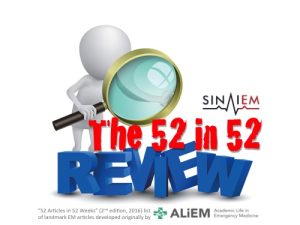The 52 in 52 Review: The International Registry of Acute Aortic Dissection (IRAD) New Insights Into an Old Disease.
Article Citation: Hagan PG et al. The International Registry of Acute Aortic Dissection (IRAD)New Insights Into an Old Disease. JAMA. 2000;283(7):897-903. doi:10.1001/jama.283.7.897
What We Already Know About the Topic: Aortic dissection has challenged physicians since it was first described in the 1700s. It is the most common aortic condition requiring surgery and can present with diverse symptoms and progress rapidly with high mortality. A prior study suggests that 38% of dissections were missed on initial evaluation and 28% were diagnosed post mortem.
Why This Study Is Important: Prior to this publication little was known about how advancements in imaging, surgical and non-surgical interventions have affected patient outcomes.
Brief Overview of the Study: The International Registry of Acute Aortic Dissection was established in 1996 and includes 12 large referral centers in 6 countries. This study analyzed data collected from the first two years of the registry and enrolled 464 patients. Aortic dissections were most common in elderly males with hypertension. As seen in the table below classic findings such as “ripping tearing chest pain”, hypertension, pulse deficit, abnormal CXR or normal ECG may be absent.
| Feature from the history or physical exam | Type A | Type B | p value |
| Average Age | 61.2 years | 66.3 years | <0.001 |
| Chest pain | 78.9% | 62.9% | <0.001 |
| Quality of pain: Sharp | 62% | 68.3% | NA |
| Quality of pain: Tearing or Ripping | 49.4% | 52.3% | NA |
| Syncope | 35% | 7% | .002 |
| Hypertensive | 35.7% | 70% | |
| Normotensive | 39.7% | 26.4% | |
| Hypotensive | 11.6% | 4% | |
| Shock or tamponade | 36% | 2% | |
| Pulse Deficit | 53% | 16% | |
| No abnormalities of CXR | 11.3% | 15.8% | .08 |
| No abnormalities of ECG | 30.8% | 32.1% | .76 |
Limitations: The study was conducted at large academic institutions, limited diversity was seen in the patient population and only patients who were alive at time of diagnosis were studied. Limitations of chart review studies also apply.
Take Home Points: Clinicians must maintain a high clinical suspicion for dissection as it does not frequently present in textbook fashion.

